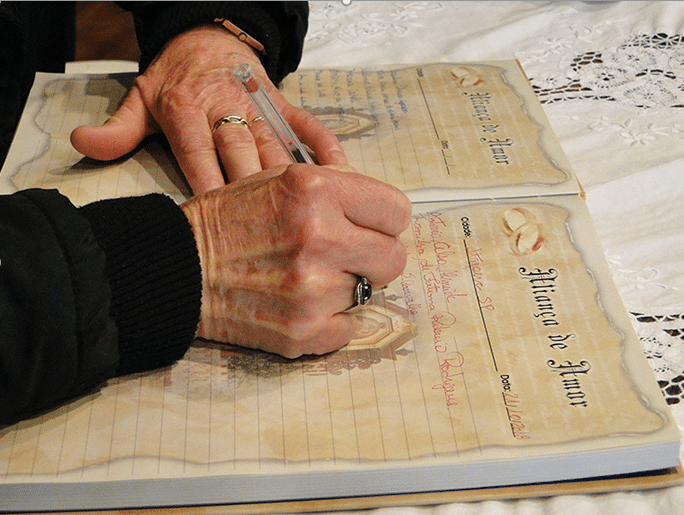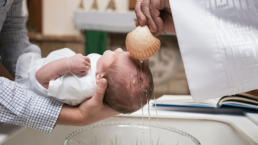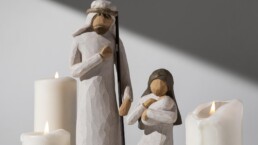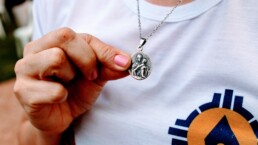The Covenant of Love and our baptism
As we renew the Covenant on the 18th, it is as if water is being poured over our heads once more.
Those preparing to seal the Covenant of Love with Mary first study the covenant stories made by God with his people throughout the Old and New Testaments. The scriptures remind us how God is always merciful and compassionate, offering his children a new chance.
From Adam, Noah, Abraham and Moses, the Bible narrates the entire history of the covenant, reaching its culmination, which is Christ, the New and Everlasting Covenant. These important passages want to show that Schoenstatt’ origin is directly related to this history, because the Covenant of Love sealed on October 18, 1914 is deeply connected with the history of salvation.
The baptismal Covenant of Love
Through Baptism every Christian becomes part of the eternal covenant, which is Jesus. It is a real and concrete covenant that is accepted and confirmed in the Sacrament of Confirmation. “On the day of our baptism we were consecrated in Christ, given to God the Father, in a sacred covenant, in a commitment of love. The first consecration of our being and of our life took place, since to consecrate means to take something from its ordinary and common use – for example, water, the chalice… – offering it for divine service or worship. In the baptismal covenant, we have been separated from the power of sin and given as children to God the Father.
Living the “covenant with Christ,” that is, living our Baptism, is the center of the Christian’s life. Out of love, each person assumes the obligations of this covenant.

A covenant
When we speak of the Covenant of Love with Mary in Schoenstatt, we speak of renewing, reviving the covenant sealed in Baptism. In the Original Shrine, at the founding of Schoenstatt, God manifested himself anew to his people through Mary with a specific charism and introduced his congregation in a special way into the great current of the universal covenant.
When a person consecrates himself to Mary in the Shrine, he consciously renews his baptismal consecration. As a mother, Mary wants to nourish the divine life generated in each person through baptism, preserving and educating the hearts of her children always close to Christ.
Thus, Father Kentenich affirms: “Every covenant we seal and renew with Mary signifies, in our thinking and will, a new decision, freely made, for Christ, his person, his interests and his kingdom, it includes a new and vigorous demonstration of the will, it includes a new decision for him, the King of the world and of hearts. It also includes an act of grace, which comes from above, is synonymous with a deeper growth in the close fellowship of love between us and the Triune God.”
Always a new opportunity
Each time the Schoenstatt children renew their Covenant of Love, either alone or in community, as we do on the 18th, it is their baptism that is renewed, as if water is again poured over their heads, entitling them to a new identity. There they celebrate once again the insertion of their hearts into the heart of the Father and of the Trinity.
In his encounter with the members of the Schoenstatt Movement, Pope Francis said: “When we celebrate the Eucharist, we celebrate the renewal of the Covenant. Not symbolically, but in a very deep, very real way. It is the very presence of God renewing the covenant with us.” (October 25, 2014)
This certainty gives strength and courage, it allows all those consecrated to the Mother and Queen to continue trusting that in every Holy Mass heaven touches earth again and the covenant becomes concrete: it is time for our love!
– References from the book “Eu pertenço à Mãe e ela me pertence – Preparação para Aliança de Amor, Movimento Apostólico de Schoenstatt, edições Aliança”. –
Source: www.schoenstatt.org.br
Related posts
April 18, 2024
Covenant of Love Day: Becoming Prophetic, Like Mary
Dear Schoenstatt Family all over the world, Greetings on the celebration of the Covenant of Love Day. We remember with gratitude and joy…
March 19, 2024
Saint Joseph: Radical service leadership
When we talk about leadership, we tend to bring to mind the image of people of great public or private reputation, with decision-making…
March 18, 2024
Mary’s best ally
As every 18th of the month, we are celebrating a new day when we come together throughout the world to renew our Covenant of Love. This…




